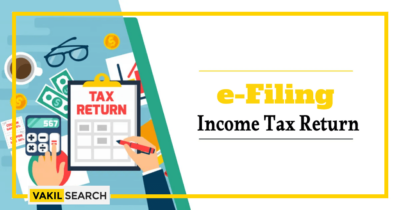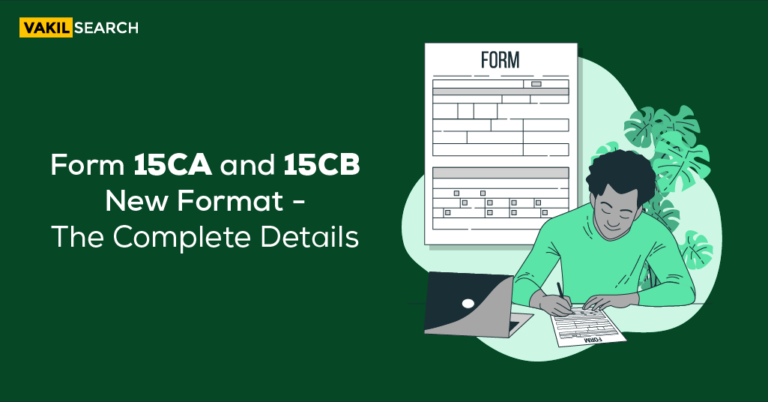Keep reading to understand all about the uses, functions, benefits and purpose of the income tax reporting portal handled by the income tax department.
Overview of the Income Tax Reporting Portal
The Income Tax Department has recently empowered scheduled commercial banks (SCBs) to check the IT return filing status of PANs in bulk. The designated director of SCBs, registered with the IT department’s income tax reporting portal, shall be able to use this functionality. They can do this by logging into the reporting portal using their credentials.
What is a Reporting Entity?
Any person/entity required to furnish a Statement of Financial Transaction (STF) in Form 61A or Statement of Reportable Account in Form 61B with the Income Tax Department can be categorised as a Reporting Entity.
Reporting entity thus includes the following:
- Banks (also RBI)
- Mutual Funds
- Registrar
- The company issues bonds, debentures or shares
- Any person liable for audit under section 44AB of the Income Tax Act
- Anyone authorised under FEMA
- Any person falling under Section 285BA of the Income Tax Act
- Post office
- Government
Depending upon the category, one has to register at the Income tax reporting portal and submit forms 60, 61A, and 61B, respectively. It should be noted that all Form 60, 61A, and 61B facilities have been transferred from the e-filing portal to the reporting portal as of 9 April 2019.
The following features make the Reporting Portal a better interface than the E-filing portal of the income tax department
- Improved data security
- Smoother data processing
- Compliance management
- A mechanism for seamless information exchange between reporting entities
- Help desk support
What is the Income Tax Reporting Portal?
The Reporting Portal is an online interface made available by the Income Tax Department of India. Its purpose is to make it possible for reporting entities to register with the Income Tax Department.
Functionalities of Income Tax Reporting Portal
- Upon registration with the reporting portal, all reporting entities are provided with ITDREIN (a unique 16-digit number).
- A principal officer designated by the reporting entity can add, review and change the users who can access the portal.
- The designated director can update the statements in the prescribed format.
- A reporting entity can also upload correction statements by analysing the data quality report generated.
- A reporting entity can also update its profile and download utilities, user guides, training material, etc.
Benefits of the Income Tax Reporting Portal
The income tax reporting portal offers several advantages compared to the e-filing portal:
- Effortless data processing and enhanced quality monitoring.
- Enhanced security through data encryption.
- Smooth information exchange with reporting entities.
- In-depth resources module to support capacity building.
- Streamlined management of Reporting Entity compliance.
- Specialized support from the help desk.
Submission of Correction Statement and Deletion of Submitted Reports
The IncReporting Portal allows the reporting entities to correct any false statements. The; statement pending for correction’ page displays the statements with ‘Reports Requiring Correction (RRC)’ beside them. Reporting entities must extract, correct, and upload them back onto the portal. Reports that need to be updated are also highlighted in the QDR (Data Quality Report) generated after the statements are submitted. When a reporting organisation wants to delete a report inside a statement, it can select ‘Deletion Statement’ and follow the same steps as when submitting a correction statement.
Steps: Income Tax Reporting Portal Registration
As mentioned earlier, any person/entity falling under the reporting entity category must register on the income tax reporting portal.
- Step 1: For all new registrations to the income tax reporting portal, a reporting entity needs to log in to https://incometaxindiaefiling.gov.in/ (e-filing website) with their existing credentials as an income taxpayer.
- Step 2: The entity then needs to click on the ‘Reporting Portal’ link under the ‘My Account’ tab on the filing website to access the reporting portal for the first time.
- Step 3: Next, the reporting entity is required to fill in mandatory details like the type of form to be submitted, the category and address of reporting person/entity, and details of the Principal Officer.
- A Principal Officer is designated by the reporting entity who can add, review, and change the users.
- Once those details are submitted, other information like the Designated Director and Nodal office can also be added. The Designated Director is the only person who will be able to upload the STF (Statement of Financial Transaction).
- Point to be noted: The Principal Officer and Designated Director can be the same person.
- Step 4: Once the above details are entered and submitted, an ITDREIN is generated. A confirmation email is sent to the Principal Officer and all the listed users on their registered email IDs.
Eligibility for Using the Income Tax Reporting Portal
The Income Tax Reporting Portal is a digital platform designed to streamline and enhance the income tax filing process. To utilise this portal, individuals must first be eligible for online tax filing. Typically, this includes salaried individuals, freelancers, businesses, and professionals with taxable income. The portal caters to a diverse range of taxpayers, providing a user-friendly interface for efficient reporting and compliance.
To access the Income Tax Reporting Portal, users need to register and create an account. The eligibility criteria extend to those who have a valid Permanent Account Number (PAN) and adhere to the specified income tax regulations. Once registered, individuals can file their income tax returns, track refunds, and manage other tax-related activities conveniently through the portal. This digital initiative not only simplifies the tax reporting process but also ensures accessibility for a broad spectrum of taxpayers, fostering a more inclusive and technologically advanced tax ecosystem.
Types of Forms Using in Income Tax Reporting Portal
Form 61
Any transacting party that does not hold a PAN needs to file Form 61, as the reporting entity must obtain one from the transacting party.
Form 61A
A reporting entity that is required to report transactions of the specified nature in the SFT relevant to the financial year on or before 31 May immediately following the financial year needs to file a financial statement in Form 61A
Form 61B
A reporting entity that needs to follow a Due diligence procedure to identify reportable accounts for implementing the FATCA (Foreign Account Tax Compliance Act) and CRS (Common Reporting Standard) must file this form.
Conclusion
The recent empowerment of scheduled commercial banks (SCBs) to verify the IT return filing status of PANs in bulk through the income tax reporting portal marks a significant step in enhancing efficiency and compliance. The income tax reporting portal, designed for reporting entities, offers improved data security, smoother data processing, and comprehensive compliance management. It facilitates seamless information exchange among entities and provides dedicated help desk support.
Frequently Asked Questions
What is the purpose of the income tax reporting portal?
The purpose of the income tax reporting portal is to provide an interface between the reporting entities and the Income Tax department under the Project Insight platform.
How do I access the income tax reporting portal, and is there a specific login process?
The Reporting Portal can be accessed by registering as a user and logging in with a username and password. The login process is specific to each user.
What types of reports and data can be accessed through the income tax reporting portal?
The Reporting Portal provides access to reports and data related to the use of funds by reporting entities. Such as - SFT reports (Form 61A) and SRA reports (Form 61B). Individual and consolidated report data.
Are there different user roles or access levels within the Reporting Portal?
Yes, within the income tax reporting portal different roles with varying access levels, such as administrator, user and viewer exist.
What are the key features and functionalities of the Reporting Portal?
The key features and functionalities of the Reporting Portal are as follows: Secure online submission of SFT and SRA reports Report generation and validation tools Data analysis and visualization capabilities
Can I customize the reports on the Reporting Portal to suit my specific needs?
Yes, the reports on the Reporting Portal can be customized to suit specific needs.
Is there a tutorial or user guide available for navigating and using the Reporting Portal effectively?
Yes, online tutorials and user guides are available within the Portal.
What security measures are in place to protect sensitive information within the Reporting Portal?
Secure login protocols and data encryption ensure information security of the sensitive information stored within the income tax reporting portal.
How frequently is the data on the income tax reporting portal updated, and is real-time reporting available?
The data on the income tax reporting portal is updated periodically, and real-time reporting is not available.
Are there any support channels or resources available for users who have questions or issues with the Reporting Portal?
Support channels and resources such as online helpdesk and customer support channels are available for users who have questions or issues on the income tax reporting portal.











